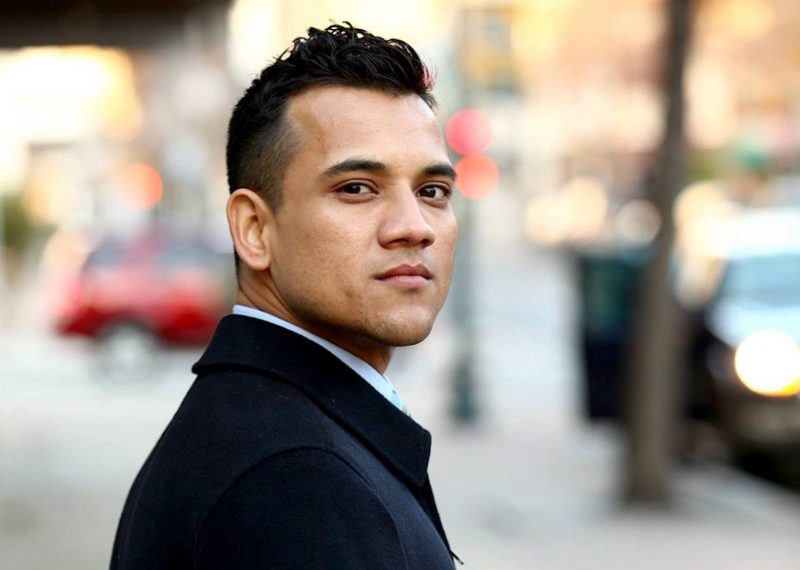This story is part of Covering Climate Now, a global journalism collaboration strengthening coverage of the climate story.
Climate change is fueling longer dry spells, bigger floods and more violent storms across the globe, but the effect is most pronounced in the tropics, where even a small rise in temperature can turn a heat wave from miserable to deadly or lend a hurricane the destructive power needed to level a small town. In the decades to come, more chaotic weather in Mexico, Central America and the Caribbean will spur millions of people to move to the mainland United States. This new migration has already begun as drought devastates farmers in Guatemala and Honduras, and more dangerous hurricanes imperil communities around the Gulf of Mexico.
Last year, a UN panel ruled that any refugee facing imminent harm from climate change cannot be deported from their adoptive country. The ruling, however, is nonbinding, and it’s unclear how a court would determine who counts as a climate refugee, a term that has no formal definition as of yet. The United States, which has contributed more to climate change than any other country on Earth, and thus, contributed more to climate migration, does not treat people displaced by climate disasters as refugees.
As such, two different migrants fleeing similar climate disasters may have radically different experiences seeking sanctuary in the United States. A migrant from Puerto Rico, who enjoys the full benefits of citizenship, can move freely to the mainland. A migrant from Central America, facing the same threat from climate change, will face a much harder road.
Jose Luis Zelaya falls in the second group. He came to the United States after living through Hurricane Mitch, a category 5 hurricane that killed more than 11,000 people across Central America, making it the deadliest Atlantic cyclone in at least a century. With climate change, hurricanes are growing stronger, fueled by warmer waters. Mitch struck in 1998, which was then the hottest year on record.
Zelaya, who was 11 at the time, remembers howling winds and floodwaters streaming through the streets in Honduras. He remembers the toppled buildings, the lifeless bodies and the rancid odors.
“After the hurricane there was a lot of chaos. A lot of people were looking for water. A lot of people were looking for medicine,” he said. “The things that happened afterwards were painful, man. That’s why so many people migrated.”
Zelaya’s mother fled with his sister to the United States, while he stayed behind with his abusive father. Zelaya said that it was better for his mother to save one child than to save none, and he was able to look after himself.
“We were always close. We always loved each other,” he said. “But situations of pain and violence and poverty and natural disasters had separated us.”
For two more years, he dealt with the fallout of Hurricane Mitch. The devastation worsened poverty, which in turn fueled gang violence. For two years, he more or less managed, until he was caught in the middle of a drive-by shooting that left two bullets in his arm. That’s when his mother decided to use what money she had saved up to help Zelaya come to the United States.
Zelaya traveled unaccompanied and arrived undocumented. It took him six weeks on foot, on horse, by bus and by train to reach the Rio Grande, where immigration officials detained him for another two months. He remembers the moment when he was finally reunited with his mother.
“Just seeing that door open and my mom being there — beautiful,” he said. “It was a fresh start. It was like the pain went away.”
This was the beginning of a new life in Texas. He slowly learned English, committed himself to his studies and eventually earned his PhD in education at Texas A&M, focusing on students for whom English is a second language.
Zelaya’s road to the United States was difficult, marked by a painful separation from his loved ones, a harrowing trek, and a long internment. More than two decades after his arrival, he has still not been made a lawful permanent resident. Zelaya is only protected by the Deferred Action for Childhood Arrivals program, which allows undocumented immigrants brought to the United States as children to live and work in the country legally.
Not every climate migrant endures such a difficult journey. Some start off like Zelaya, waylaid by disaster, but their path diverges at a critical juncture.
Sharellee Rosario-Rondón watched her husband, Willam Pagán-Pérez, move to Buffalo, NY in 2017. A music teacher, Pagán-Pérez was recruited by local officials looking for bilingual teachers to instruct Spanish-language students in public schools. The plan was for Rosario-Rondón to join him in Buffalo eventually.

Then Hurricane Maria hit Puerto Rico as a category 5 storm in 2017, which was around 0.5 degrees F warmer on average than 1998, the year that Hurricane Mitch battered Honduras. Maria killed more than 3,000 people, making it the deadliest hurricane in U.S. history. Climate change has made such powerful storms more likely.
“What happened was a big loss. I remember watching the streets, the destroyed places,” Rosario-Rondón said. “I felt alone.”
After the storm, essential goods were hard to come by. Lines at ATMs could be six hours long. Lines at gas stations could be 12 hours long. Rosario-Rondón was drawing down her savings to get by, and when that ran out, she started charging her credit card.
But Rosario-Rondón was able to make her way to the mainland. Unlike Zelaya, she flew to Buffalo on a plane, and, as a U.S. citizen, was assured every legal protection upon her arrival. She even managed to bring her dog along. In the end, she was separated from her husband for a matter of weeks, not years. After moving, Rosario-Rondón honed her English working at a supermarket before finding a job as a teacher instructing Spanish-language students.
Both Rosario-Rondón and Zelaya fled the fallout of a climate disaster, but only the former enjoyed the advantage of having been born on U.S. soil. This distinction, however much an accident of history and geography, however ultimately arbitrary, determined who could migrate freely and who would be relegated to the shadows.
The question of who counts as a climate refugee and what legal protections the United States should afford them will grow more pressing as temperatures rise. Zelaya said that stories like his are important to understanding the immigrant experience, what drives people to come to the United States, what they endure to get here, and what they can bring to this country.
“When you come from experience, understanding certain things because you lived them, that’s very important,” he said. “Unfortunately, too many times those stories go unheard.”
Jeremy Deaton writes for Nexus Media News, a nonprofit climate change news service. You can follow him @deaton_jeremy. This story was made possible by a grant from the Open Society Foundations.


